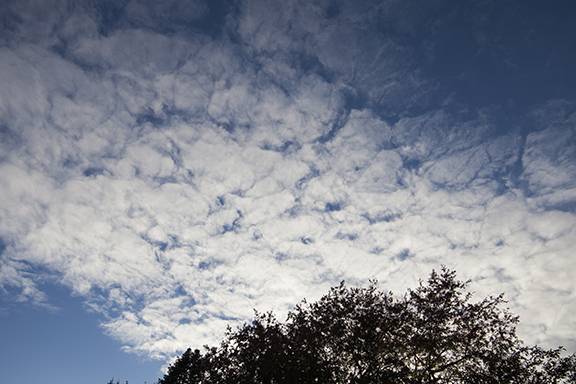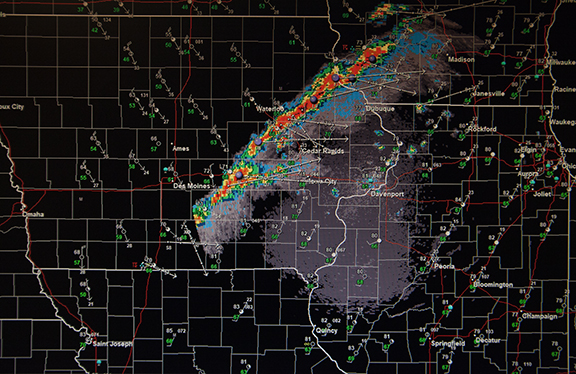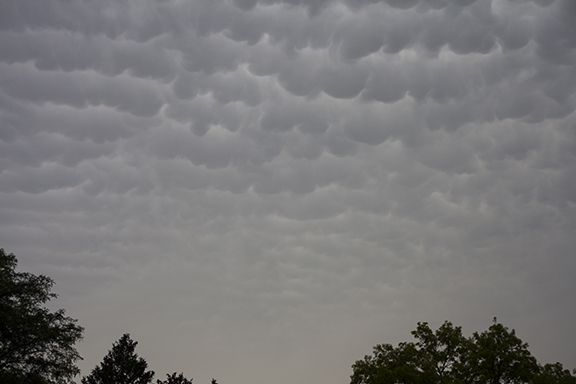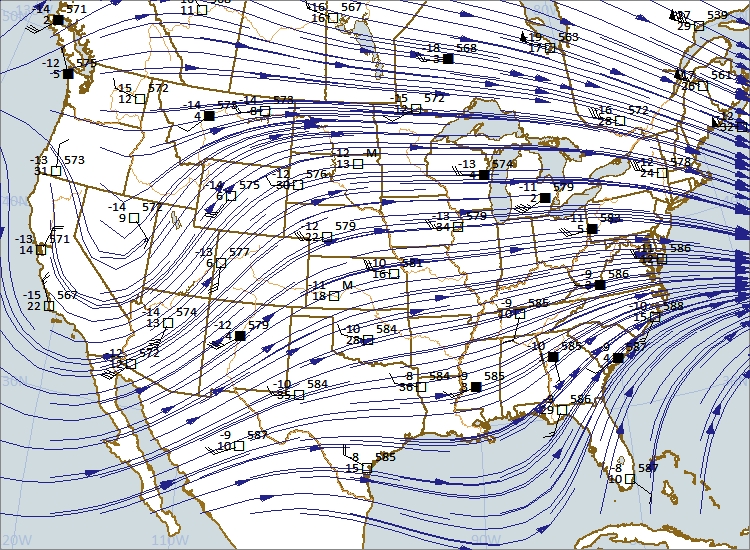Passing Cold Front
/Another cold front passed by yesterday giving us a brief encounter with mild temperatures. It lasted about 2 hours when our high temperature touched 62 degrees. As the front approached scattered clouds formed. The photo below shows strips of altostratus with a few rag tag fractured cloud tags. At this point winds were breezy from the west and southwest.
Altostratus and fractus clouds. Cedar Falls, Iowa. Photo by Craig Johnson. Copyright 2018
This close-up in the photo below of an expanding area of altostratus was taken near the leading edge of the cold front.
Close-up of altostratus and fractured clouds. Cedar Falls, Iowa. Photo by Craig Johnson. Copyright 2018
As the front passed this patch of altocumulus shown below moved over head.
Altocumulus. Cedar Falls, Iowa. Photo by Craig Johnson. Copyright 2018
The next photo shows a close-up of the altocumulus. Notice the cell structure of this cloud time. The cloud layer is divided into cloud cells with lines of nearly clear sky around each cell. It should be pointed out that the areas of clear or nearly clear skies in the altocumulus are caused by sinking air. The clouds are found where condensation occurs in areas of rising motion. By contrast, the altostratus clouds are in a mostly continuous layer or sheet. Altostratus also occur in rising motion but rising motion with stratus type clouds is slower than in cumulus type clouds.
Close-up of altocumulus. Cedar Falls, Iowa. Photo by Craig Johnson. Copyright 2018








































